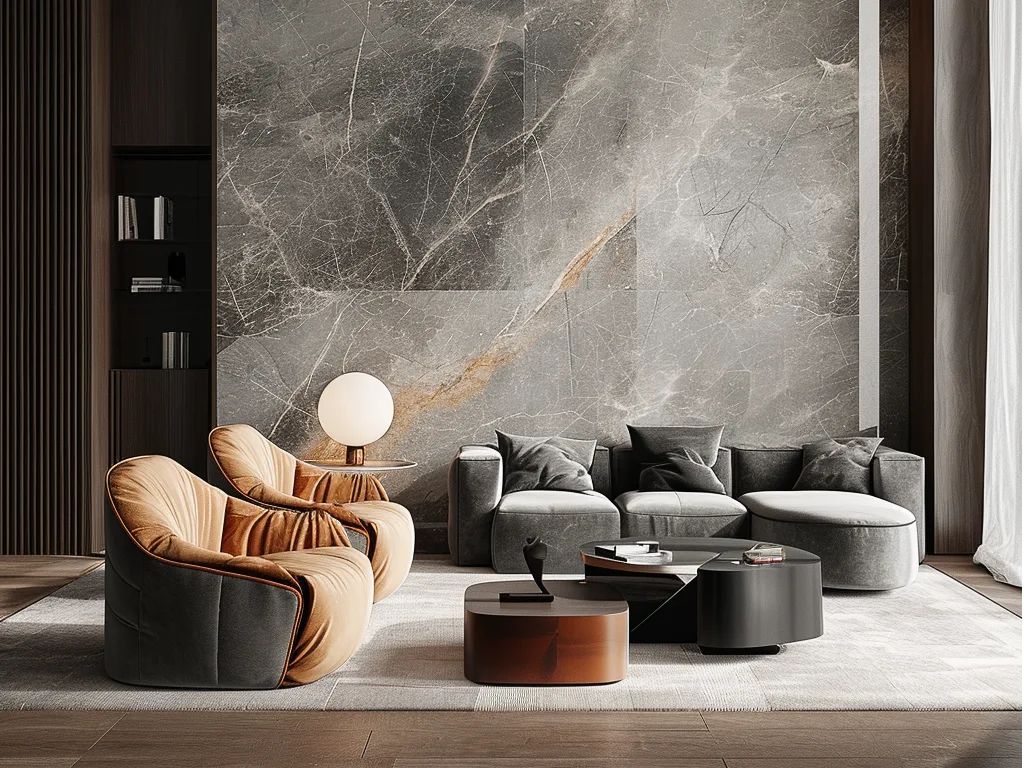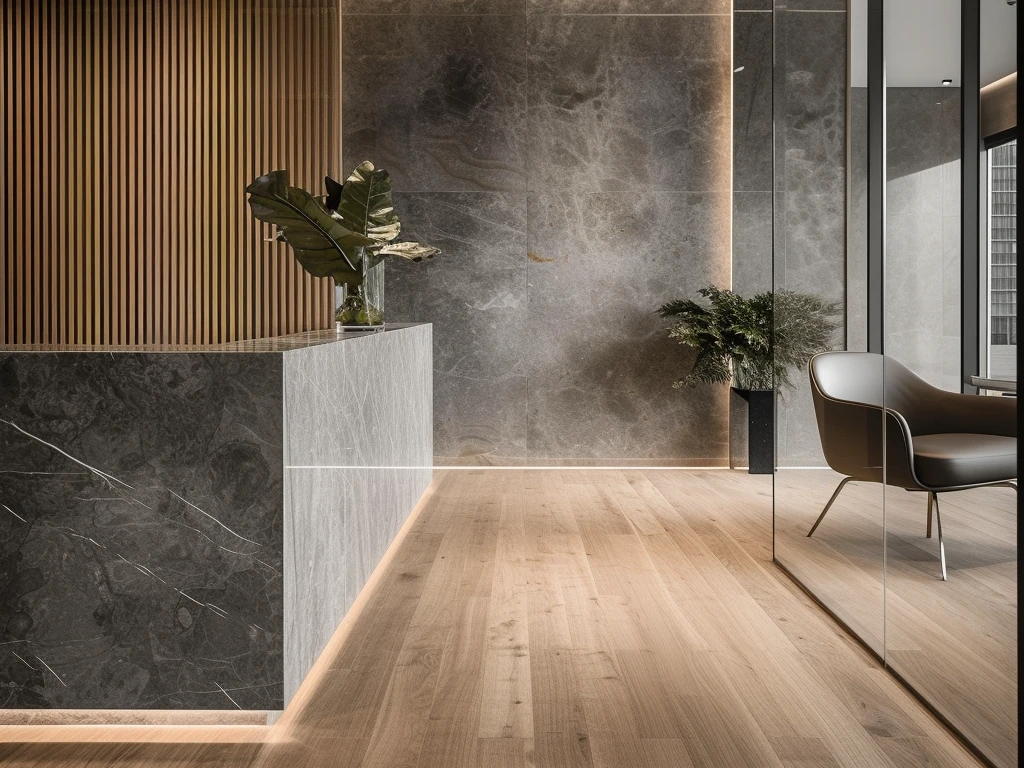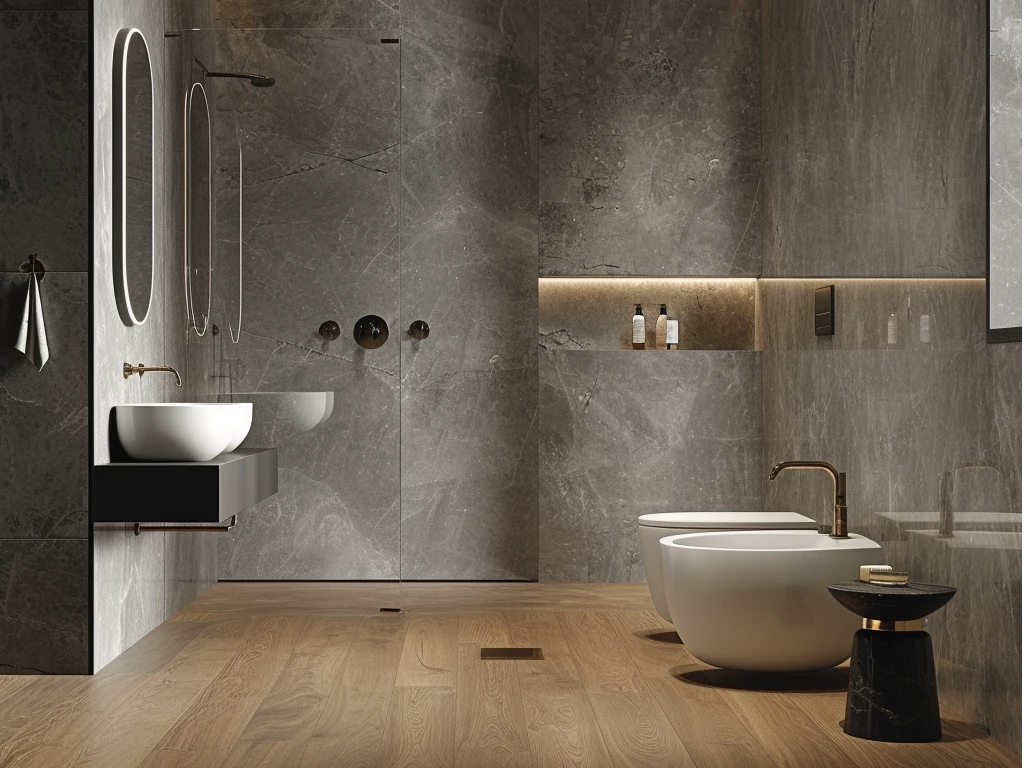Understanding WPC Material in Wall Panels
Composition and Properties of WPC Material
Wood Plastic Composite (WPC) stands out as a material blending the top attributes of wood and high-density polyethylene (HDPE). WPC comprises natural wood powder and plant fibers like cane along with calcium carbonate (stone powder) and polymer resin in its composition mix. To enhance its properties further for applications like fire resistance and foaming capabilities, and to ensure stability during production processes such as high-temperature extrusion and molding techniques, additives like flame retardants and stabilizers are also included. This special blend enables WPC to imitate the look of wood while providing improved strength and protection against external elements.
The use of sandalwood powder in WPC enhances its aesthetic appeal by providing a finer texture compared to cane and husk fiber. Sandalwood powder is more delicate; the finished product is more beautiful, and it has a woody aroma when burned. Additionally, light calcium carbonate acts as an environmentally friendly filler that improves the toughness of the material. Light calcium is more environmentally friendly, and the finished product has stronger toughness.
Environmental Benefits of Using WPC Material
The use of WPC material provides environmental advantages that make it a favorable option for creating eco-conscious wall panel designs. This product is eco-friendly and poses no threat of pollution or harm to the environment—it can even be recycled. Additionally, the product is devoid of benzene and has a formaldehyde content of just 0.01, which meets stringent low EO grade criteria and complies with European environmental regulations. These attributes not only ensure the safety of using WPC panels indoors but also support sustainable development initiatives by reducing the need for wood resources.
Furthermore, WPCs ability to be recycled helps in conserving resources by reducing waste. The manufacturing process includes the use of recycled materials like pipes and leftover pieces, from already made items. These small pipes are essentially scraps made from plastics and leftovers from completed products.
Innovative Design Possibilities with WPC Wall Panels
Aesthetic Versatility of WPC Wall Panels
The WPC wall panels provide aesthetic options with their flexibility and diverse color range, offering a variety of colors to choose from that mimic natural wood texture and grain while allowing customization to match personal preferences in color selection, empowering designers to craft unique styles tailored to different architectural themes.
Furthermore, the inclusion of inorganic pigment in WPC panels improves their ability to withstand harsh weather conditions and maintain color consistency over time. The enhanced weather and heat resistance reduce the likelihood of discoloration, resulting in a natural wood-yellow hue in the final product guarantees that the panels retain their visual allure even when subjected to challenging environmental elements。
Durability and Maintenance Advantages
The durability of WPC wall panels stands out due to their maintenance needs and long-lasting nature. They resist cracking and deformation, which minimizes upkeep tasks required of them over time. You’ll find them effortless to clean well, which means less spending after installation, making them a smart pick for homes and businesses alike when you’re looking for lasting results.
Using stabilizers such as calcium zinc enhances stability in a more eco-friendly manner than conventional lead-based stabilizers do, so far as environmental impact is concerned. In contrast to a blend of salt stabilizers, relying on calcium zinc stabilizers offers benefits, such as being more environmentally friendly and showcasing strong thermal stability characteristics.
Impact on Sustainable Architecture and Interior Design
Role of WPC Wall Panels in Green Building Certifications
Using WPC wall panels is crucial for obtaining building certifications because they are eco-friendly, recyclable, and have low formaldehyde emissions that adhere to international standards like the ISO14001 certification for environmental management systems compliance.
Our efforts to improve energy efficiency by utilizing sound absorption techniques also align with the principles of architecture, as they enhance indoor comfort and lower energy usage substantially.
Case Examples of Eco-friendly Designs Utilizing WPC Panels
Numerous real life instances showcase how architects have effectively incorporated WPC panels into conscious designs in a range of global projects—from eco friendly residential buildings aiming for sustainability without sacrificing aesthetics, to commercial venues needing sturdy yet visually attractive materials that can endure heavy usage demands over time while retaining both functionality and style allure.
Here are some instances that showcase the design options enabled by adaptable materials such as WPC, turning conventional architectural ideas into contemporary sustainable buildings that seamlessly match the current environmental awareness trends in construction sectors worldwide!
Challenges and Considerations in Adopting WPC Wall Panels
Cost Implications and Economic Viability
Adopting WPC wall panels involves evaluating the cost implications and economic viability of using this material in construction projects. While WPC panels offer numerous advantages, including durability and environmental benefits, their initial cost can be higher compared to traditional materials. This is primarily due to the advanced manufacturing processes and high-quality raw materials used in their production.
However, the long-term economic viability of WPC wall panels is favorable. WPC’s recyclability contributes to resource conservation by minimizing waste. Additionally, their low maintenance requirements and extended lifespan reduce overall lifecycle costs. No cracking, expansion, or deformation, reducing the need for maintenance. These factors make WPC panels a cost-effective investment for projects aiming for sustainability and longevity.
Addressing Environmental Concerns
Although WPC material is praised for its friendly characteristics, it is important to consider possible environmental issues linked to its creation and application. The production process entails high temperature extrusion and molding methods that consume energy. Therefore, it is vital for manufacturers to implement energy techniques in order to reduce the carbon footprint of WPC manufacturing.
In addition to that point mentioned earlier about sourcing materials like wooden powder and polymer resin sustainably to maintain the eco-friendly nature of WPC products is crucial for ensuring its environmental responsibility intact. The end product should be safe for the environment, without causing any pollution or harm to it. Following sourcing methods and improving production techniques, can help reduce the environmental effects of WPC wall panels even more effectively.
Introduction to Latitude Custom Products
Latitude’s Commitment to Sustainability
Latitude is known for its focus on sustainability when it comes to creating WPC wall panels and is dedicated to eco practices from material sourcing to manufacturing processes. We utilize wood powder ranging from 80 to 120 mesh. Emphasize the use of sandalwood powder in a larger amount to showcase their commitment to sustainable resources.
Latitude goes above and beyond choosing materials, we also prioritize cutting down waste by using creative recycling techniques, for small pipes made from recycled plastics and leftover pieces from other products. This strategy not lessens the negative effects of production but also matches up with worldwide sustainability objectives.
Customization Options Available
Latitude provides a selection of customization choices for their WPC wall panels to meet different design preferences and project needs effectively. Clients have the flexibility to pick from an array of colors and textures to create personalized styles that match various architectural themes effectively. We offer a color palette for customers to select from for their projects.
Latitude offers personalized WPC wall panel solutions that cater to functional requirements in addition to aesthetic enhancements, such as improved thermal insulation and acoustic performance.











